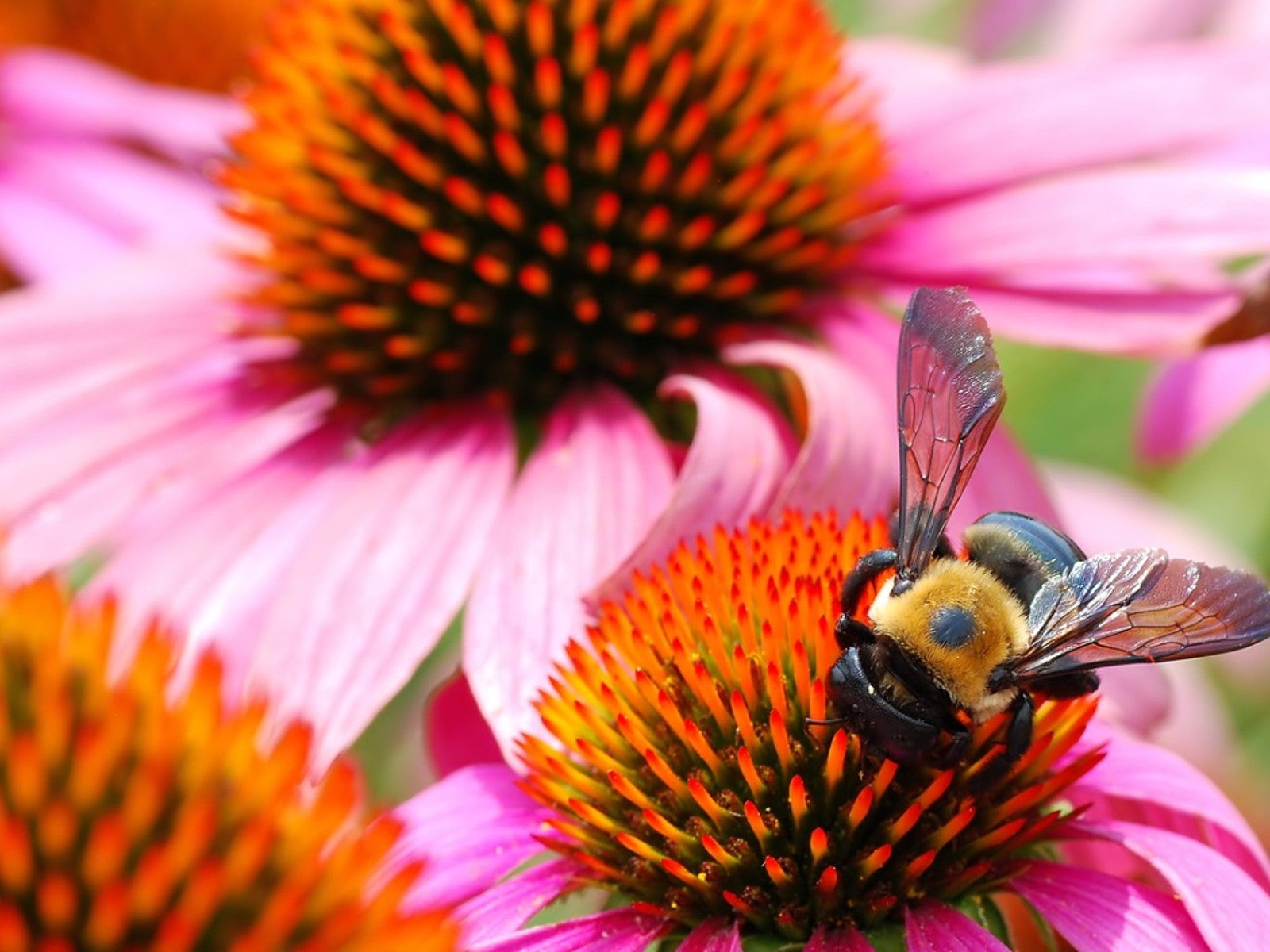Ohio Valley And Central Midwest Native Pollinator Plants


When gardeners think of pollinators, managed hives of European honeybees often come to mind. Yet, here in the Ohio Valley and Central Midwest region, there are hundreds of species of native bees, butterflies, moths, and other insects that help pollinate our vegetable gardens and flowerbeds. Planting Midwest and Missouri native pollinator plants is one way to protect these valuable species.
The Purpose of a Pollinator Garden: Ohio Valley Region
Protecting pollinators can't be overstressed. It's estimated one of every three bites of food is the result of cross-pollination by pollinators. If you like tomatoes, here's a fun fact: native bumble bees are more effective at pollinating tomato flowers than the European honeybee.
While most gardeners are aware that honeybee populations have been declining, they may not realize that many native species of pollinators are also endangered. By creating a pollinator garden, Tennessee, Kentucky, and Central Midwest gardeners can help protect these and many more vulnerable species:
- Bumble bees – Easily identified by their large size and yellow and black coloration, bumble bees live in underground colonies. Unlike honeybees, bumble bees will pollinate flowers in the rain.
- Carpenter bees – Often considered a nuisance species due to their propensity to chew holes in wood structures, carpenter bees pollinate a variety of fruit crops. Unlike honeybees, they can vibrate flowers and dislodge pollen.
- Leaf cutter bees – So named because they harvest pieces of leaves to line their nests, leaf cutter bees are important pollinators for the production of alfalfa seed.
- Masked bees – Mostly black, these small bees are often mistaken for wasps. Masked bees pollinate elderberries, goldenrod, and Queen Anne's lace.
- Mining bees – Small to medium sized, mining bees are soil dwellers that pollinate spring-blooming fruit crops such as apples, blueberries, and cherries.
- Mason bees – Also known as orchard bees, this species is fond of pollinating fruit-bearing trees and shrubs. They are cavity nesters who sometimes take advantage of holes made by other insects.
- Polyester bees – So named for the plastic-like secretion they produce, polyester bees are a solitary, ground nesting species. With a preference for woody plants, these bees pollinate trees such as sugar maples and plums.
- Squash bees – Sporting coloration similar to honeybees, squash bees are important pollinators of cucurbit crops. The males can sometimes be seen sleeping overnight in squash flowers.
How to Make a Pollinator Garden
Creating a pollinator friendly garden is not difficult. It involves providing food, shelter, and water for all stages of the pollinator's life. Here are a few tips to get you started:
- Plant a diverse group of native plants that bloom throughout the year.
- Leave hollow stemmed plants intact over the winter to provide shelter for nesting bees.
- Limit the use of weed barriers to allow ground nesting bees access to the soil.
- Refrain from being too tidy. Not mowing every bit of the yard or leaving a few logs, a brush pile, or stump provides resting spots and shelter to pollinators.
- Use a bird bath, fountain, or shallow bowl to give pollinators access to water.
- Avoid using pesticides and herbicides. These can indiscriminately kill pollinators or plants that are necessary for their survival.
Midwest and Ohio Pollinator Plants
When choosing plants for the garden, consider these Midwest and Indiana native pollinator plants.
Spring Blooming
- Cream Wild Indigo (Baptisia bracteata)
- Culver's Root (Veronicastrum virginicum)
- Foxglove Beardtongue (Penstemon digitalis)
- New Jersey Tea (Ceanothus americanus)
- Smooth Spiderwort (Tradescantia ohiensis)
- Wild Geranium (Geranium maculatum)
- Wild Lupine (Lupinus perennis)
Summer Blooming
- Black-eyed Susan (Rudbeckia hirta)
- Butterfly Weed (Asclepias tuberosa)
- Field Thistle (Cirsium discolor)
- Prairie Blazing Star (Liatris pycnostachya)
- Purple Coneflower (Echinacea pallida)
- Swamp Milkweed (Asclepias incarnata)
- Yellow Giant Hyssop (Agastache nepetoides)
Fall Blooming
- Joe Pye Weed (Eutrochium spp)
- Little Bluestem (Schizachyrium scoparium)
- Maximilian Sunflower (Helianthus maximiliana)
- New England Aster (Aster novae-angliae)
- Showy Goldenrod (Solidago speciosa)
- Tall Ironweed (Vernonia gigantea)
- Wingstem (Verbesina alternifolia)
Sign up for the Gardening Know How newsletter today and receive a free copy of our e-book "How to Grow Delicious Tomatoes".

Laura Miller has been gardening all her life. Holding a degree in Biology, Nutrition, and Agriculture, Laura's area of expertise is vegetables, herbs, and all things edible. She lives in Ohio.